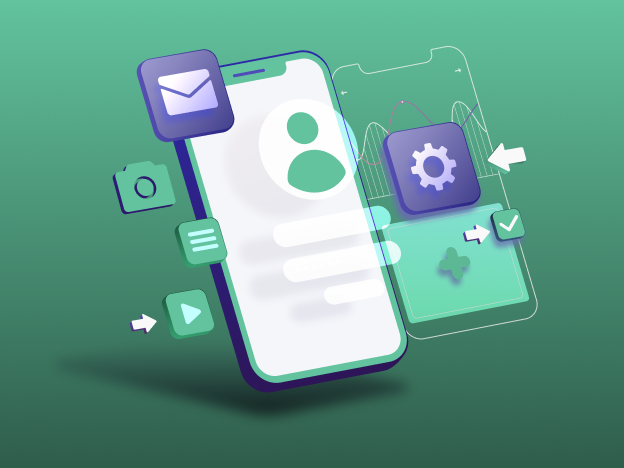The 3 most common types of UI
User interface design (UI) can take many different forms. However, the main task of the designer always remains creating an interface that makes the user’s interaction with the product efficient, comfortable and pleasant. Learn about the 3 common types of user interface design.
Graphic interfaces:
based on images and icons. They are the most typical interface and work well across a variety of media. Users can interact with it by touching (on a smartphone or tablet), clicking with the mouse cursor or tapping with a stylus.
Gesture-based interfaces:
are a response to the growing popularity of augmented reality (AR) and virtual reality (VR). Such an interface ‘translates’ the user’s gestures into specific commands.
Voice-based interfaces:
the user can navigate the website using voice commands. Such systems are used, for example, in the operation of intelligent assistants (Google Assistant, Siri, Alexa).

User interface design principles
Find out how to design a user interface based on 7 principles taken from Nielsen’s heuristics.
1. Be consistent
Colours, animations, language and fonts must be consistent with each other. You will avoid the impression of chaos and provide users with a better orientation on the page.
2. Give users control
Feeling in control of what is happening on the page encourages further interaction. If an internet user makes a mistake (clicks on a different object than they intended), they should be able to quickly and easily back out of the action.
3.Provide feedback
An example is an order confirmation. If the user does not receive it, they may be concerned.
4.Give the opportunity to correct errors
You can do this by letting the user know, for example, if they have entered their password incorrectly, if they have entered a phone number that is too short or if they have missed a box on a form. The user can quickly change or complete the data without interrupting the action they are taking on the page
5.Do not rely on users’ good memory
Repeat information on the page that is needed, for example to place an order. Don’t force internet users to return to previous tabs to check relevant messages. This may discourage them.
6.Prevent errors
You can do this by providing the option to roll back to a previous step without losing the data you entered.
7.Design for all
The site can be used by different people (with more or less web experience). Each of them should easily find their way around the interface and not encounter problems with the site.
UI vs. User Experience (UX) Design
UI (user interface) is not the same as UX (user experience), although they are related concepts. Let’s look at the differences.
User interface design focuses mainly on designing the visual part of a website. It ensures appropriate interactions and makes sure that the navigation path is easy to read and stylistically appealing.
User experience, on the other hand, has the task of providing users with a clear navigation path so that they can navigate through the site without hindrance. Elements of the site should enable internet users to take action in line with their intentions. For example: when they click on the ‘buy now’ button, they should be redirected to a purchase form and not to another product page.
Importance of User Interface Design
Successful UI design highlights the difference between an excellent and poor user experience on a website. Using good design practices in UI, as well as knowing the guidelines in this area, allows you to create the best interface for your product. Simplicity, consistency of navigation, not overdoing the number of elements and using the right tools can be the key to success.

